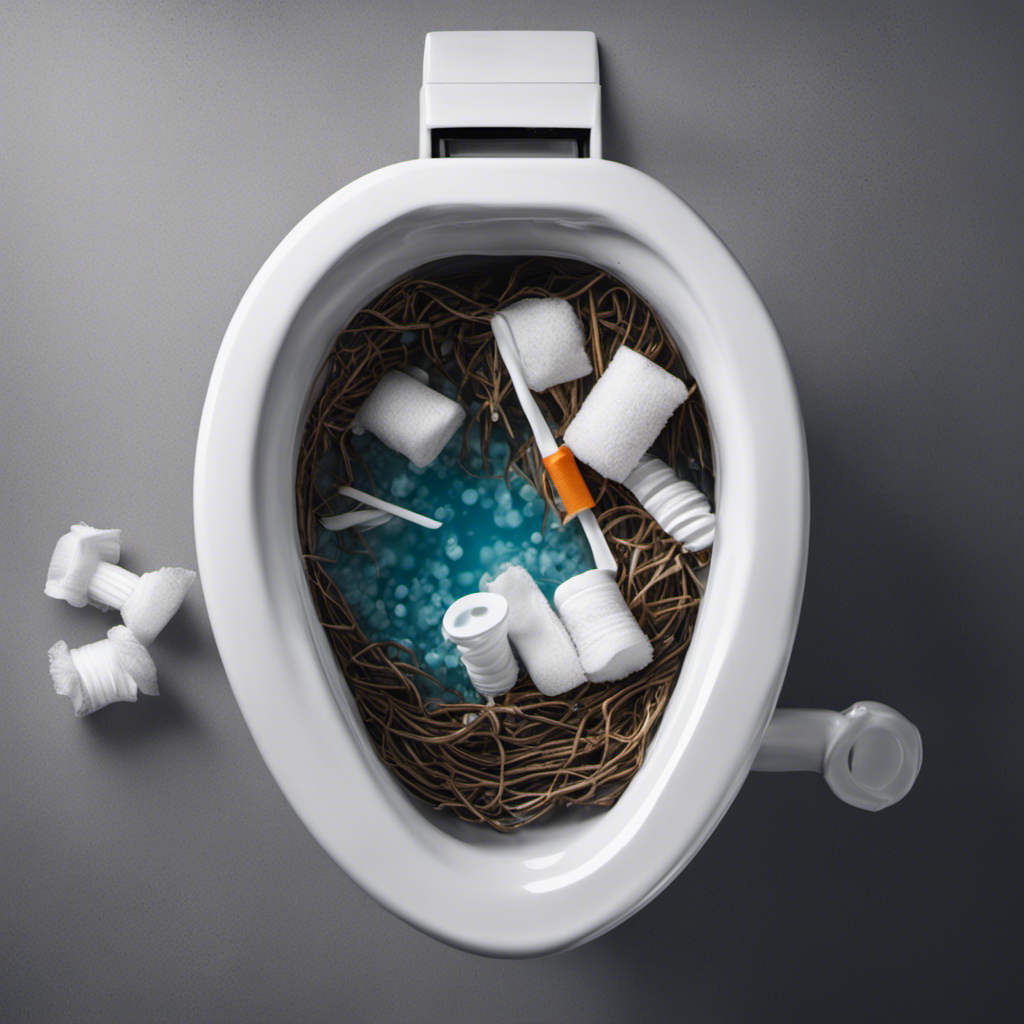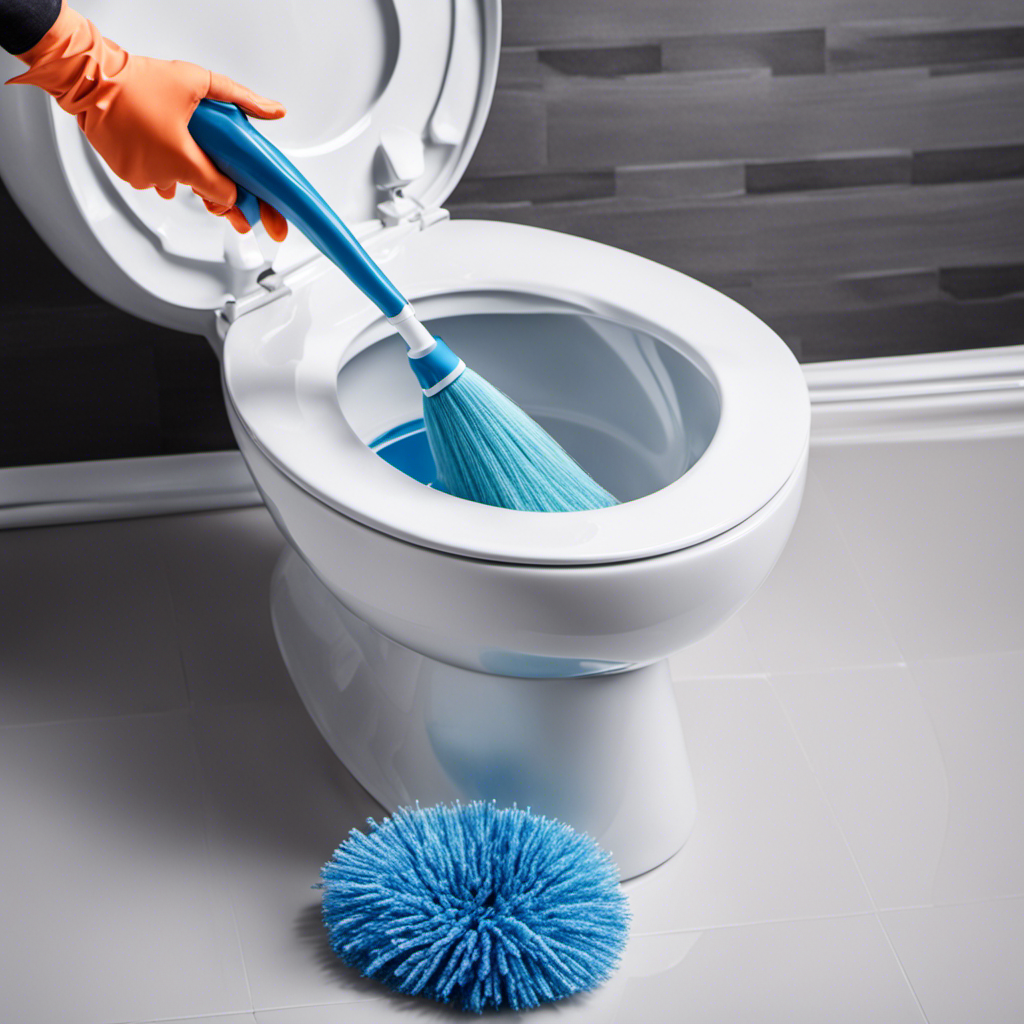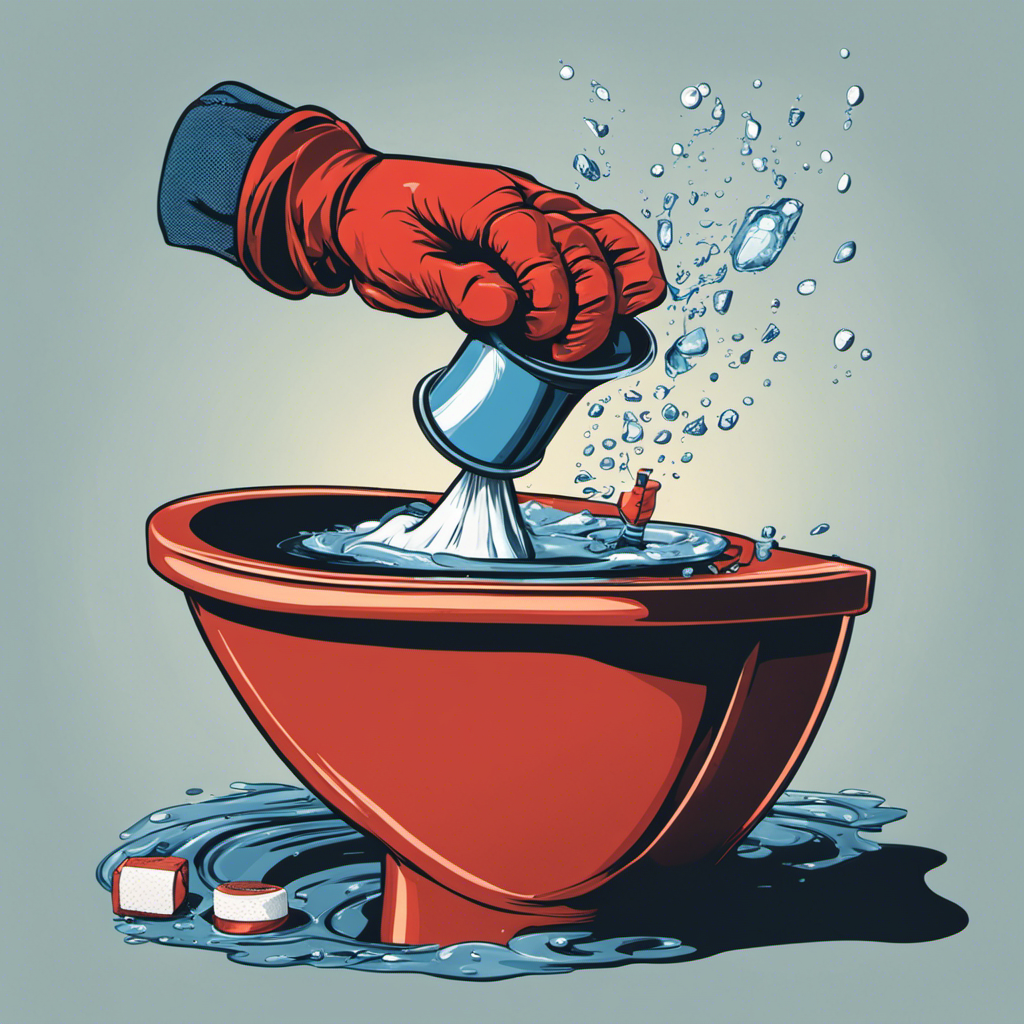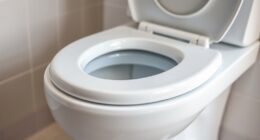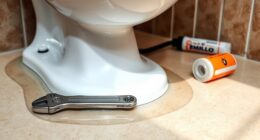I’ve always heard the saying ‘out of sight, out of mind,’ but when it comes to flushing Q tips down the toilet, that couldn’t be further from the truth. You may not think twice about it, but those seemingly harmless cotton swabs can wreak havoc on your plumbing.
Their small size allows them to slip through the narrow gaps in toilet traps and pipes, leading to clogs and blockages. In this article, we’ll explore the consequences of flushing Q tips and provide you with the necessary information to prevent these issues.
Key Takeaways
- Q tips can easily slip through the toilet trap and pipes, leading to blockages.
- Cotton swab clogs create a blockade that can completely block the toilet and prevent other waste from passing through.
- Q tips do not dissolve in water and can cause significant damage by sticking to other particles and toilet waste.
- Proper waste disposal in a trash bin is the best practice to avoid toilet clogs and blockages.
The Size Disparity: Q Tips Vs. Toilet Pipes
I learned that Q tips can easily slip through the two-inch wide gap of standard toilet pipes, potentially causing blockages. This size disparity between Q tips and toilet pipes is a significant factor in the impact of flushing Q tips.
When flushed, Q tips can create clogs and blockages in the toilet drain. This not only causes inconvenience but also has environmental consequences. Q tips are made with plastic stems and cotton heads, which don’t dissolve in water. As a result, they can accumulate in the pipes and contribute to pollution.
To avoid these issues, it is important to use alternative disposal methods for Q tips. Instead of flushing them, Q tips should be disposed of in a trash can. This simple change can help prevent clogs, protect the environment, and maintain the proper functioning of the toilet system.
The Consequences of Q Tip Blockage
Removing Q tips from the toilet drain can be challenging and may require the use of specific tools or the assistance of a plumber. The consequences of Q tip blockage can lead to significant plumbing damage and costly repairs.
When Q tips get stuck in the toilet drain, they create a blockade that prevents other waste from passing through the pipe. This can result in a complete blockage, causing the toilet to overflow or not flush properly. The pressure from flushing can also cause the Q tips to stick to other particles and toilet waste, exacerbating the problem.
If left untreated, the blockage can cause damage to the plumbing system, leading to expensive repairs. It is crucial to dispose of Q tips in the trash can to avoid these consequences and maintain the proper functioning of the toilet.
Dealing With Cotton Swab Clogs: Removal Techniques
Using specific tools or seeking professional assistance can effectively address the issue of cotton swab clogs in the toilet drain.
When faced with a cotton swab clog, there are several DIY solutions you can try for toilet maintenance.
First, you can use your hands with rubber gloves to pinch and pull out visible Q tips.
Another option is to use an auger, which you can push into the drain and twist clockwise to dislodge and remove the clogs.
Alternatively, you can use a toilet plunger to create a vacuum seal and apply pressure to push through the clog.
However, if the clog is too large or deep for DIY removal, it’s best to call a plumber for professional assistance.
The Importance of Prevention: Proper Disposal of Q Tips
Properly disposing of Q tips in a trash can instead of flushing them down the toilet is essential to prevent clogs and maintain a healthy drainage system.
When you flush Q tips, they can easily slip through the narrow pipes and create blockages. These cotton swabs are made of plastic and do not dissolve in water, making them a major cause of toilet clogs.
To avoid this, it is important to use alternative disposal methods. By throwing Q tips in the trash can, you not only prevent clogs but also reduce the environmental impact. Flushing non-flushable items like Q tips can damage the draining system and contribute to pollution.
What Not to Flush: A Comprehensive List
I should never flush items like nail clippings, hair, tampons, baby wipes, chewing gums, cooking grease, cigarette butts, and paper towels down the toilet.
Flushing non biodegradable items can have severe environmental impacts. Non-dissolvable items like Q tips can lead to clogs and blockages in the toilet. The accumulation of debris from these items can create a firm blockade, preventing other waste from passing through. Medications should never be flushed as they can contaminate water sources and harm aquatic life.
It is crucial to understand the consequences of flushing non-flushable items. These items can damage the draining system, cause clogs, and pollute the environment. To protect our plumbing system and the planet, it is essential to dispose of these items properly in the trash can.
Additionally, medications should be taken to a pharmacy for safe disposal to prevent harm to our water sources and ecosystems. Let’s make responsible choices and prioritize the health of our environment.
The Bottom Line: Flushing Q Tips Is a No-Go
Now that we have discussed the comprehensive list of items that should never be flushed down the toilet, it is important to understand the bottom line when it comes to Q tips.
Flushing Q tips is a big no-go due to the potential environmental impact and health hazards they can cause.
When Q tips are flushed, they can easily create blockages and clogs in the toilet pipes. These blockages not only disrupt the flow of waste, but they can also lead to sewage backups and overflows, causing significant damage to the environment.
Additionally, the accumulation of Q tips and other waste materials in the toilet can create a breeding ground for bacteria and other harmful pathogens, posing potential health risks to individuals.
To avoid these issues, it is crucial to dispose of Q tips in the trash can instead of flushing them down the toilet. This simple change in behavior can help protect both the environment and our health.
Dental Floss and Cotton Pads: Additional Toilet Clog Culprits
Dental floss and cotton pads can contribute to toilet clogs by accumulating and obstructing the drainage system. This can have a significant environmental impact and cause potential damage.
Here are some key points to consider:
- Flushing non-biodegradable materials like dental floss and cotton pads can harm the environment.
- These materials do not break down easily and can cause blockages in the pipes.
- The accumulation of dental floss and cotton pads can lead to complete toilet clogs.
- Flushing non-flushable items can damage the draining system and cause costly repairs.
It’s important to dispose of dental floss and cotton pads in the trash can instead of flushing them. This simple change can help prevent clogs and protect the environment.
Seeking Professional Help: When to Call a Plumber
When facing a stubborn and deep clog, it is advisable to call a plumber for professional assistance. DIY removal may not be possible when the clog is too large and deep for simple tools like plungers or augers to handle.
Attempting to remove the clog without proper knowledge and tools can lead to further damage to the plumbing system or even personal injury. The potential risks of not calling a plumber include worsening the clog, causing a pipe burst or water damage, and incurring higher repair costs in the long run.
Plumbers have the expertise, experience, and specialized equipment to effectively and safely remove even the most stubborn clogs. It is always better to seek professional help to ensure the problem is resolved efficiently and without causing additional complications.
Frequently Asked Questions
Can Flushing Q Tips Cause Damage to the Toilet Pipes?
Flushing Q tips can cause damage to toilet pipes. It’s important to avoid flushing them to prevent clogs and blockages. Proper disposal methods, such as using a waste basket, should be followed to maintain the integrity of the toilet system.
Why Don’t Q Tips Dissolve in Water Like Toilet Paper?
Q tips don’t dissolve in water like toilet paper because they’re made of plastic. This composition makes them non-biodegradable and harmful to the environment. Alternatives for personal hygiene include reusable cotton swabs or washcloths.
Are There Any Other Items Besides Q Tips That Should Not Be Flushed Down the Toilet?
Yes, there are other items besides Q tips that should not be flushed down the toilet. Items such as cotton pads, dental floss, and non-biodegradable waste have a negative environmental impact and can cause clogs.
Can Q Tip Blockages Be Cleared Without the Need for Professional Help?
Yes, q tip blockages can sometimes be cleared without professional help. Household items like a plunger, auger, or gloves can be used to remove the blockage. Remember, it’s best to dispose of q tips properly in a waste basket.
How Can Q Tips Be Properly Disposed of to Prevent Toilet Clogs?
To prevent toilet clogs, q tips should be properly disposed of in a waste basket instead of being flushed. This is the recommended alternative to flushing q tips to avoid blockages and damage to the toilet’s draining system.
Conclusion
In conclusion, flushing Q tips down the toilet is a definite recipe for disaster. The small size of Q tips may deceive us, but their impact on toilet clogs and blockages is no laughing matter. These plastic cotton swabs easily slip through the narrow gaps of toilet pipes, leading to clogs that can be a nightmare to deal with.
Prevention is crucial, so remember to dispose of Q tips in the trash can. And let’s not forget the importance of avoiding other non-flushable items. Trust me, the consequences of flushing Q tips are far from pleasant.
